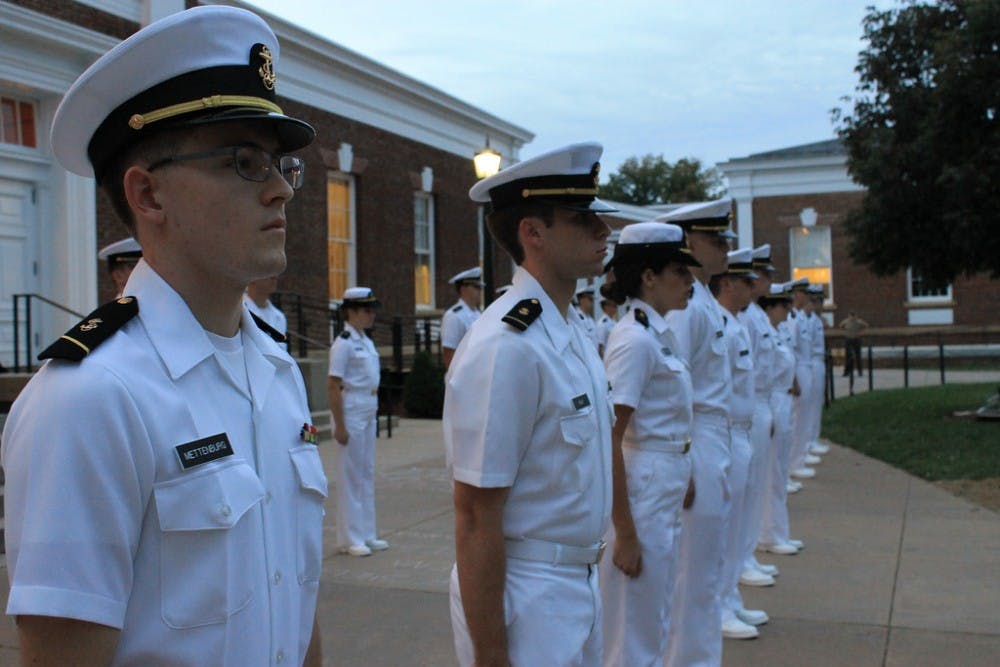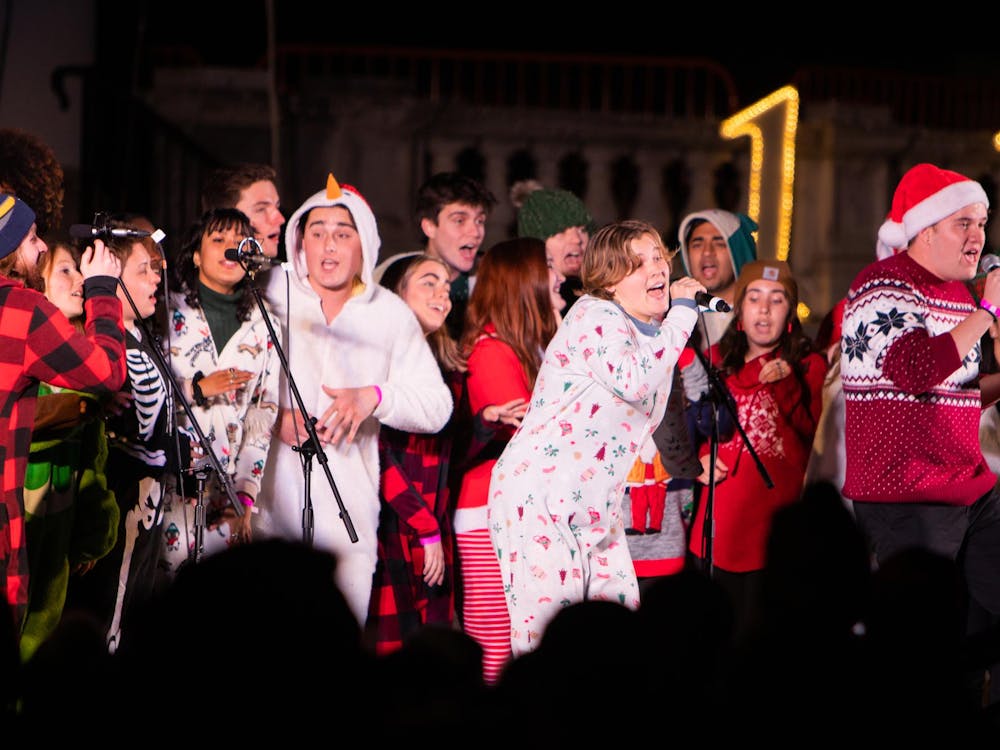After an extensive training process during the first few months of school, fourth-year Engineering student Kris Peck was ready for the seven-mile run, rope bridge challenge, obstacle course and other tests he would face at Ranger Challenge. An event unique to the Army ROTC program, Ranger Challenge provides a team of 13 students the opportunity to compete against 40 other schools in the mid-Atlantic area in military skills.
“You wake up four or five days a week [to train for Ranger Challenge],” Peck said. “It’s tough, but you build a certain camaraderie with the 12 other guys or girls you do it with.”
Attending Ranger Challenge is one opportunity Peck was afforded by participating in the Reserve Officers’ Training Corps — more commonly known as ROTC. A college-based program that offers scholarship opportunities to students that train to become future Navy, Army and Air Force leaders, all three ROTC programs combine physical training with academic training.
Members of ROTC are required to dedicate time to military service after graduating. The Army ROTC program offers students various service options, including active service and a reserve option that involves monthly training. In the Air Force, there is no reserve option — all cadets serve for four years or longer, depending on their position. Naval service time also depends on position.
For members of Army ROTC, requirements include a weekly lecture, which discusses leadership styles and basic army skills, as well as a weekly lab, which teaches military tactics. Third-year students act as leaders in the lab, while fourth-year students are in charge of planning activities. Students also have field training exercises once a semester and are required to take a military history course.
“[My ROTC training] is specifically geared toward my immediate future after school,” Peck said. “In the Army, each day is going to have a new mission, a new task to tackle. I prefer taking on those different challenges. It keeps you on your toes.”
In the Air Force ROTC program, members have physical training twice a week, an Air Force class and a leadership lab. Both physical training and the leadership lab are run by cadets, giving them a chance to practice their leadership skills. Between their second and third year, cadets undergo field training for four weeks.
“Outside of physical training and lead lab, you’re pretty much like any other college student,” said fourth-year Commerce student Erik Neighbour, a member of Air Force ROTC. “You are in college, but you are always representing the Air Force. I think it’s really important that as cadets we remember this. If you behave inappropriately, you are representing the Air Force badly.”
Members of the Naval ROTC program, meanwhile, have battalion physical training on Tuesday and a drill period on Thursday. They also have to take a naval science course.
Aside from these basic requirements, ROTC students are largely free to pursue their interests in picking classes. Most students have the freedom to choose their major, although some ROTC scholarships require the student to declare a technical major.
“[Your major] may be taken into account when you are selected for field training,” Neighbour said. “The Air Force needs a lot of technical people, so they want officers to have technical degrees. However, a technical degree is definitely not required, as my major attests to.”
Students in the Army ROTC program can major in a discipline of their choosing and still receive their scholarship, while the Navy ROTC program organizes majors into three tiers, awarding approximately 85 percent of its scholarships to students in tier one or tier two. Tier one includes engineering majors, tier two includes hard sciences and tier three makes up other liberal arts majors. Applying for a Naval ROTC scholarship involves indicating which tier your potential major falls under.
“The Navy wants a lot of technical majors, so tier one and tier two majors are pretty common,” second-year Engineering student Conor Mettenburg said.
Although ROTC is a large time commitment for its members, students emphasize they still have time to get involved with other opportunities the University has to offer.
“[ROTC] is kind of like a class, an intramural sport and an extracurricular activity rolled into one thing,” Mettenburg said. “It’s a big time commitment, absolutely, but it’s not big enough to the point [where] all you do is ROTC.”
In the Army ROTC program, an Order of Merit List is used to rank cadets based on grade point average, physical fitness scores and officer evaluations. This ranking, along with personal preference, is used to determine the area students will serve in and the type of service they will perform. For the Air Force and Navy, position is also determined by cadet preference as well as institutional need.
“[ROTC] has definitely put me in a lot of leadership situations where I’ve felt challenged,” Neighbour said. “As a result, I’ve become better at leading large groups of people, and I feel like I’ve developed personally to live [by] the Air Force values every day and be a more upstanding person in general.”
Even before they graduate and begin their service, ROTC students represent their respective branches by upholding the ideals of each institution.
“When you wear that uniform, you represent everyone else who is wearing that uniform,” Mettenburg said. “There’s a sense of pride and purpose you get.”





